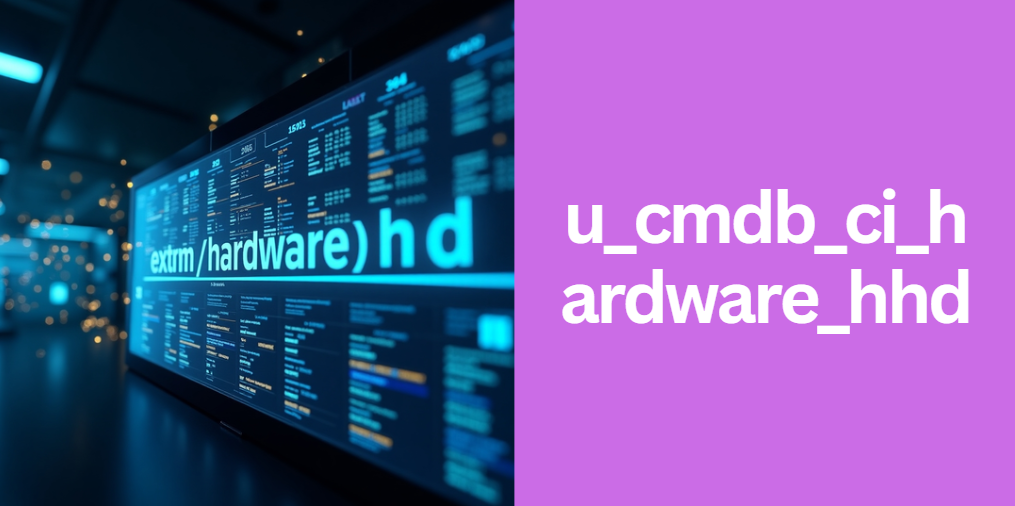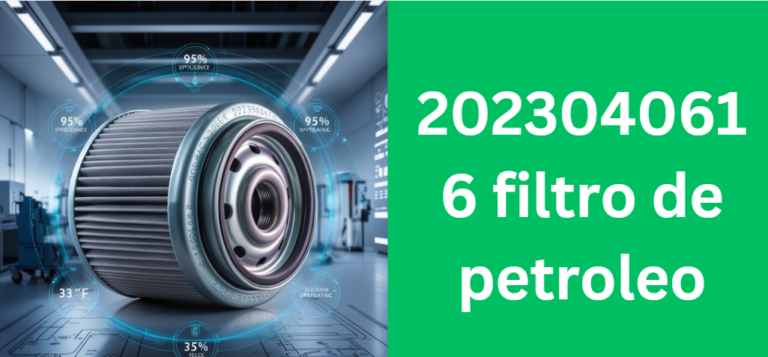The Ultimate Guide to u_cmdb_ci_hardware_hhd
In today’s fast-paced IT environment, managing hardware assets effectively is crucial. This guide provides an in-depth look at u_cmdb_ci_hardware_hhd, a custom ServiceNow table tailored for handling specific hardware components. Whether you’re a beginner looking to understand the basics or an experienced professional aiming to optimize your asset management, this article covers every aspect of this table, ensuring you have the knowledge to stay ahead of your competitors.
Introduction
u_cmdb_ci_hardware_hhd represents a custom configuration item within ServiceNow’s CMDB (Configuration Management Database). Unlike standard tables, its “u_” prefix indicates that it has been created specifically to meet unique business needs—often focusing on managing hardware details such as hard disk drives. This guide is designed to help you understand the fundamentals of this table, how to implement it in your instance, and ways to leverage it for superior hardware asset management.
Understanding ServiceNow CMDB and Custom Tables
ServiceNow’s CMDB plays a vital role in IT Service Management by organizing data about IT assets and their relationships. The use of custom tables, like u_cmdb_ci_hardware_hhd, enables organizations to extend the out-of-the-box functionality and capture detailed information that standard tables may not include.
When you explore ServiceNow’s data model, you will notice that custom tables are differentiated by their naming conventions. The “u_” prefix clearly signals that the table is user-defined. This customization allows for greater flexibility, as organizations can tailor the data schema to capture specific attributes such as performance metrics, serial numbers, and maintenance schedules.
Below is a simple comparison table highlighting the differences between standard and custom CMDB tables:
| Attribute | Standard CMDB Table | Custom Table (u_cmdb_ci_hardware_hhd) |
|---|---|---|
| Naming Convention | Predefined by ServiceNow | Custom with “u_” prefix |
| Flexibility | Limited to standard fields | Fully customizable to suit specific needs |
| Data Specificity | General hardware data | Detailed, specific attributes (e.g., capacity, status) |
| Integration | Integrated by default | Requires custom integration with existing modules |
In-Depth Analysis of u_cmdb_ci_hardware_hhd
Table Structure and Key Fields
The table structure of u_cmdb_ci_hardware_hhd is designed to capture detailed hardware information. Key fields typically include asset identifiers, model numbers, manufacturers, capacity, and operational status. This structured approach ensures that every critical data point is recorded for effective asset management.
For instance, a typical record in this table might include:
- Asset ID: A unique identifier for each hardware component.
- Model and Manufacturer: Information about the hardware’s origin.
- Capacity and Performance Metrics: Details that help assess the hardware’s capabilities.
- Status and Maintenance Schedules: Data that tracks the operational health and maintenance history.
Common Attributes and Data Points
Organizations often utilize this custom table to record attributes that go beyond the standard scope. These attributes can include installation dates, warranty information, and even custom notes related to hardware performance. In many cases, the table is extended to include fields that capture environmental conditions or specific usage statistics, providing a complete picture of each asset’s lifecycle.
Customization Options and Field Extensions
One of the greatest advantages of u_cmdb_ci_hardware_hhd is its flexibility. ServiceNow allows administrators to add or modify fields according to their unique requirements. This adaptability is especially beneficial when new hardware types or performance indicators emerge.
A brief overview of customization options includes:
- Adding Custom Fields: Tailor the table to include metrics that are critical for your organization.
- Field Extensions: Integrate additional data points like sensor readings or operational logs.
- Workflow Integration: Connect the table with ITSM workflows to automate maintenance tasks and alerts.
Real-World Use Cases and Scenarios
Many organizations leverage u_cmdb_ci_hardware_hhd to streamline asset tracking and improve decision-making. For example, a data center might use this table to monitor hard disk drive performance across multiple servers, ensuring early detection of hardware failures. Additionally, businesses often integrate this table with financial systems to manage budgeting and asset depreciation, demonstrating its versatile applications.
Implementation and Best Practices
Implementing u_cmdb_ci_hardware_hhd effectively within your ServiceNow instance involves careful planning and adherence to best practices. The following steps outline a successful approach:
- Planning and Design: Define the purpose and scope of the custom table. Determine the key fields required based on your asset management needs.
- Configuration: Create the table within ServiceNow, applying the “u_” prefix to maintain consistency with custom naming conventions.
- Integration: Connect the table to existing CMDB records and relevant ITSM modules. This ensures seamless data flow between standard and custom tables.
- Testing and Validation: Validate the data integrity through rigorous testing to avoid potential issues in production.
- Deployment: Roll out the table to your live environment and monitor its performance.
Here is a table summarizing the implementation steps:
| Step | Description | Benefit |
|---|---|---|
| Planning & Design | Define scope and key fields | Ensures clear objectives and data structure |
| Configuration | Create the custom table in ServiceNow | Establishes a dedicated table for hardware data |
| Integration | Connect with existing CMDB and ITSM modules | Enhances data consistency and workflow automation |
| Testing & Validation | Perform rigorous testing on data entries | Prevents errors and ensures data quality |
| Deployment | Roll out to production and monitor performance | Maintains system reliability and performance |
Troubleshooting and Performance Optimization
Even with careful planning, issues may arise during the implementation or operation of u_cmdb_ci_hardware_hhd. Common challenges include data synchronization issues or performance lags during high-volume queries. To address these, organizations can adopt several troubleshooting techniques:
- Data Validation: Regularly check data integrity to identify discrepancies early.
- Indexing: Optimize database indexing to speed up query responses.
- Monitoring Tools: Implement monitoring dashboards that provide real-time performance insights.
A sample table of common issues and solutions is shown below:
| Issue | Possible Cause | Solution |
|---|---|---|
| Slow Query Performance | Lack of proper indexing | Optimize database indexes and perform regular tuning |
| Data Discrepancies | Inconsistent integration between tables | Establish robust data validation routines |
| Integration Failures | API or workflow misconfigurations | Revisit configuration settings and update integrations |
Security and Compliance Considerations
Security is paramount when handling sensitive hardware data. With u_cmdb_ci_hardware_hhd, ensuring that access controls are properly implemented is key. Role-based access control (RBAC) allows you to limit who can view or modify the table. Moreover, maintaining audit trails and aligning with regulatory standards helps mitigate security risks and ensures compliance.
Organizations should consider the following security measures:
- Access Control: Enforce strict role-based permissions.
- Data Encryption: Protect sensitive data both at rest and in transit.
- Audit Logs: Maintain detailed logs to track data modifications and access.
Advanced Customizations and Integrations
For organizations looking to push the boundaries of asset management, advanced customizations and integrations are the next step. With ServiceNow’s scripting capabilities, you can automate routine tasks such as data updates and maintenance alerts. Additionally, integrating u_cmdb_ci_hardware_hhd with external systems via APIs enables seamless data exchange with financial, monitoring, or analytics platforms.
Key integration strategies include:
- Scripting Automation: Use ServiceNow’s scripting engine to create automated workflows.
- API Connectivity: Establish secure API connections for real-time data exchange.
- Future-Proofing: Continuously review and update integrations to keep pace with evolving business needs.
Case Studies and Success Stories
Many organizations have achieved significant improvements in asset management by leveraging u_cmdb_ci_hardware_hhd. For example, a global data center reduced downtime by integrating this custom table with their predictive maintenance system. Another enterprise successfully managed hardware lifecycle costs by linking the table to their financial planning software. These real-world examples underline the tangible benefits of using a tailored approach for hardware asset management.
Frequently Asked Questions (FAQ)
- What is the primary purpose of u_cmdb_ci_hardware_hhd?
The table is designed to capture detailed information on hardware components, particularly for hard disk drives, enabling precise asset management. - How can I customize this table?
You can add custom fields, extend existing ones, and integrate the table with other modules using ServiceNow’s configuration and scripting tools. - What security measures should be implemented?
Enforce role-based access, maintain audit logs, and use data encryption to protect sensitive information.
Conclusion
In summary, this guide has provided a comprehensive exploration of u_cmdb_ci_hardware_hhd. We covered its definition, key features, integration within ServiceNow’s CMDB, implementation steps, troubleshooting strategies, and advanced customization options.
By following these insights and best practices, you can optimize your hardware asset management processes, ensuring data integrity, security, and performance. This in-depth approach not only equips you with technical know-how but also positions your organization to stay ahead in the competitive landscape of IT service management.
Other Posts
Comprehensive Guide to 5172 long lake ci98r apt 102: Everything You Need to Know






